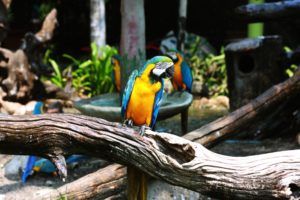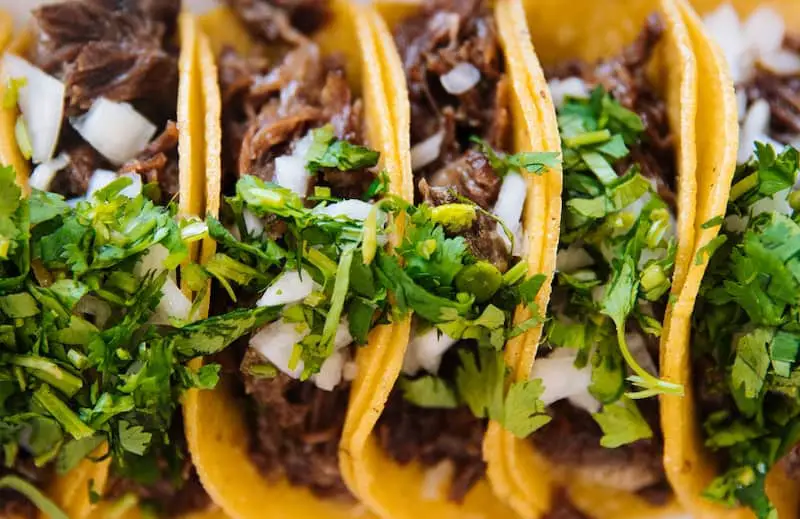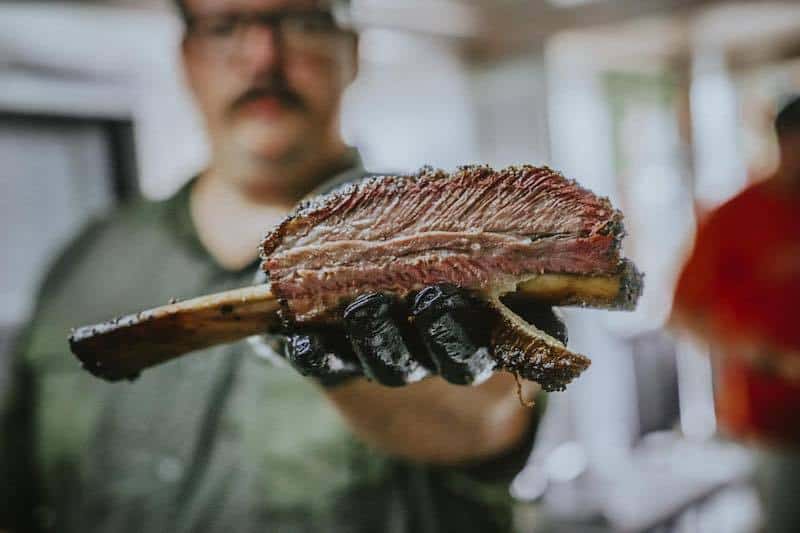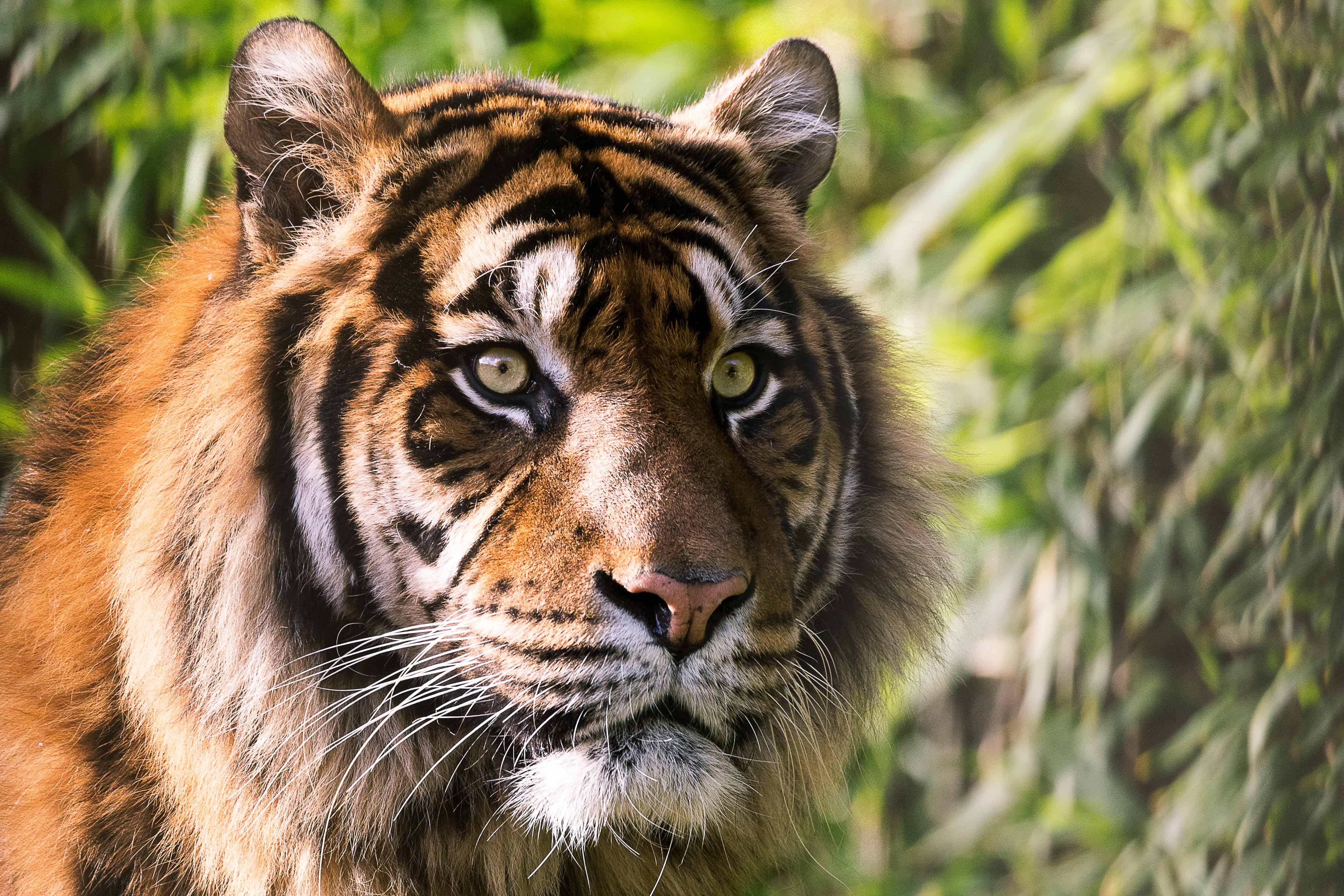The Tulsa Zoo has been a place of wonder for children and parents alike since 1927. It has been 92 years since the doors first opened, but in 2019, the Tulsa Zoo is still a great place to explore. In the 92 years the Tulsa Zoo has been open, a lot has changed.
We’ve done the research on where to park, when to go, and what to do at the Tulsa Zoo. Depending on when you go and what you see, your time at the zoo can be spent making countless memories and going on an adventure through the world of animals you will never forget.
Where to Park
Parking at the Tulsa Zoo is fairly straightforward. There are only two main parking lots in front of the admission gate. There is one to the north and one to the east. Of the two, the north parking lot is bigger and will offer more open spaces during busier times.
Parking is free during the slower months, November through March, but will cost two dollars per car on weekends and holidays during the busy months, April through October. Don’t let that discourage you from making the trip to the Tulsa Zoo, though. The busy months are popular because all the animals are out roaming their environments.
When to Go
As stated previously, the popular months, April through October, are the best time of the year to visit the Tulsa Zoo. You may be wanting a more specific explanation of “when is the best time to go?”
The busiest day of the week is Sunday, followed closely by Saturday. On these days, between 1 pm and 3 pm is the busiest time, so we recommend visiting before Noon in order to beat the crowds.
A benefit of going earlier is the milder temperatures. The sun isn’t bearing down on zoo goers. This can make your experience a the Tulsa Zoo more enjoyable for you and the whole family.
Monday through Thursday is not as popular; visiting on those days at any time is the most ideal for beating the crowds. However, visiting the zoo at a less popular time could mean that not all attractions are available due to cleaning and preparation for shows. Typically, shows occur on the weekends at peak hours.
What to Do
The wildlife experts at the Tulsa Zoo have divided the animals by region in some cases. With so many exhibits, there a chance you won’t be able to see all of them in one visit. There is a map of the zoo and its attractions available at the admission gate that will help you find all the exhibits you are looking for.
Here is a list with short explanations of all the major exhibits. This can help you plan out your visit and your path through the zoo to make sure you experience the best that the Tulsa Zoo has to offer. The next time you visit, you can take adifferent route and see all the exhibits you missed the last time around.
1. Africa Exhibit
There is an entire section designated to African wildlife, which is the largest section of the Tulsa Zoo. You’ll find animals such as African elephants, giraffes, lions, and rhinoceroses in the African exhibit roaming the recreated environments of the African plains.
There are quite a few animals to see in just this one exhibit, but a high point is the Rhino Reserve. Rhinoceroses are an endangered species, so it is very special to be able to see them thriving here in Tulsa.
2. Asia Exhibit
 This exhibit is called the Lost Kingdom on the map you can pick up as you enter the zoo. There are so many animals and environments to see in this section of the zoo.
This exhibit is called the Lost Kingdom on the map you can pick up as you enter the zoo. There are so many animals and environments to see in this section of the zoo.
In the Lost Kingdom, you will find Asia’s most endangered species. Snow leopards, tigers, Asian elephants, and siamangs (small primates) are only a few of the animals appearing in this area of the zoo. Don’t miss the Asian elephants because they just had a baby elephant.
3. Children’s Zoo
The Children’s Zoo is designed specifically with small children in mind. The selection of animals found here are much smaller and less likely to scare children. You’ll find kangaroos, otters, guinea hogs, and miniature horses.
There is also a petting zoo with farm animals and baby animals for a more sensory, up-close experience. Bring the hand sanitizer for your little ones’ hands. The animals like to lick visitors and eat from their hands.
4. Life Exhibits
There are a number of Life Exhibits ranging from cold to desert, from forest to water. They are all contained in one big section called the Wildlife Trek. There is a path that leads through all four exhibits, one after another.
Life in the Cold showcases animals that are specially adapted to live in the cold. These include snowy owls, arctic foxes, grizzly bears, and chinchillas. These animals are housed in a recreation of the tundra to help them feel right at home, even in the hot Oklahoma summer.
Life in the Desert displays animals that are uniquely adapted to live in dry, sandy desert conditions. Some animals that you will see here are chuckwallas, rattlesnakes, and black-footed cats. Just like the Life in the Cold, these animals are housed in a recreation of the desert to keep them warm even in the cold Oklahoma winter.
Life in the Forest is an exhibit showcasing the woodlands’ most notable creatures. Animals you will find in this exhibit are crocodiles, bobcats, bald eagles, and porcupines. These animals are right at home in their habitats that were specially made to feel like the forests of North America.
Life in the Water is a mixture of aquarium and terrarium exhibits. The animals found here range from sea life to birds and amphibians who spend their lives around bodies of water. Animals you will see here include American alligators, flamingos, anacondas, and various fish, such as clownfish, sea horses, and lionfish.
5. Oceans and Islands Exhibit
The Oceans and Islands exhibit is definitely a sightseeing experience. The whole exhibit is built to give the impression of finding yourself on a tropical island, complete with pieces of a wrecked ship lying around the building.
The animals you will find in this exhibit are native to tropical islands and the surrounding oceans, such as sea lions, black and white ruffed lemurs, and African penguins. The esthetic of this exhibit, as well as the vibrant and eccentric creatures, make it stand out as a favorite for most visitors.
6. Conservation Center
The conservation center is home to various species of animals from all different regions of the world. There are primates, birds, reptiles, and fish housed in the center as they give birth to their young. This building’s purpose is to inspire population growth within certain at-risk species on the brink of endangerment.
This building also contains an incubator for giving care to reptile and bird eggs. If you visit this exhibit at the right time, you might catch a few hatchlings emerging from their shells as they begin their life in the world.
7. Rainforest Exhibit
The rainforest exhibit is made to resemble a Central and South American Rainforest, rich in water and thick with tropical vegetation. The animals in this habitat enjoy the dense foliage and moss covered trees in each section. You’ll find black howler monkeys, anacondas, piranhas, jaguars, and golden-headed lion tamarins roaming their recreated home as you venture through the exhibit.
This is also one of the few exhibits with animals who are allowed to roam free. Certain species, including two-toed sloths, move from treetop to treetop in the main area and periodically come down to interact with visitors. Don’t be alarmed; they aren’t harmful in the slightest.
If you’ve read this far, you’re probably thinking, “I don’t think there’s enough time in the day to see all of those exhibits,” or you may be saying, “that is too much walking.” Well, there’s something you can do to cover all of the stops at the Tulsa Zoo in one easy, half-hour ride.
8. Safari Train
The safari train is a guided tour across the entire zoo. You will see all the outdoor attractions and exhibits, as well as learn some information from the tour guide that you may not have known about some of the animals.
The train is great for the kids too. If they are getting tired from all the walking, you can take them on a train ride to finish looking at the exhibits you weren’t able to get to.
Where to Eat
If you are planning to make a day out of going to the zoo, you’re going to have to think about what to eat while you’re there. There are quite a few options for you while you are in the Tulsa Zoo. Here is a quick guide to food at the zoo.
1. Komodo Canteen – ★★★★☆
Komodo Canteen is situated next to the Tiger exhibit in the Lost Kingdom and features a variety of snack items and concessions. You can get corn dogs and funnel cakes, as well as ICEEs and sodas to curb the hunger you will get from walking. You can stretch your legs in the two nearby picnic seating areas as well.
2. Rajan’s – ★★★★☆
Rajan’s is located in the heart of the Lost Kingdom and offers chicken strips, loaded tots, and Nashville-style sandwiches. It’s the perfect place to take a load off and enjoy some familiar tastes while you beat the summer heat in their indoor lounge seating.
3. Macaw Landing Grill – ★★★★★
 Macaw Landing Grill is in the building not far from the rainforest exhibit. It offers your typical American cuisine, such as burgers, salads, sandwiches, and pizza.
Macaw Landing Grill is in the building not far from the rainforest exhibit. It offers your typical American cuisine, such as burgers, salads, sandwiches, and pizza.
You can enjoy your meal while sitting in the air conditioning inside or go outside and eat under the shaded patio. From the patio, you can see at a distance a few different animals in their habitats.
4. Jaguar Junction – ★★★★☆
Jaguar Junction is found not too far from Macaw Landing Grill, right next to the playground. There is a great selection of hot snacks to curb your hunger and cold drinks to quench your thirst. They also offer soft serve ice cream to satisfy your sweet tooth and cool off in the shade at the covered picnic area nearby.
5. Bring Your Own Food – ★★★★★
The Tulsa Zoo allows outside food and drinks to be brought in if none of the other options seem to suit you. There are picnic tables located throughout the zoo that make it easy to take a break and eat lunch before setting out and exploring some more.
This option is most popular among families with small children since it costs less and makes sure everyone gets exactly what they want. The only downside is having to wheel the cooler around the zoo the entire day.
Related Questions
Is the Tulsa Zoo dog-friendly?
Pets are not permitted at the Tulsa Zoo for the safety of the animals and for your pet’s well-being. Service dogs are permitted, but certain areas will be inaccessible while escorting them.
Remember not to leave your precious pets unattended in your car while visiting the zoo.
Is the Tulsa Zoo suitable for all ages?
There are so many attractions and exhibits at the Tulsa Zoo for all ages. There are places in the zoo, such as the Children’s Zoo and the safari train, that are designed specifically for children. This is to make sure that people of all ages can leave the zoo with a sense of wonder.
What are some rules to be aware of?
Smoking, firearms, and pets are not permitted on the zoo premises. Skateboards, rollerblades, and other sporting equipment are not allowed on zoo property as well. Proper clothing must be worn by all visitors, such as a shirt and shoes. Cameras and camcorders, however, are allowed, and picture-taking is encouraged to make the memories of the zoo last forever.
Now that you know about the ins and outs of the Tulsa Zoo, you are ready to visit and have the adventure of a lifetime seeing animals from all over the world. There are lots to Discover at the Tulsa Zoo.
If you liked this article, click here to read more.




























